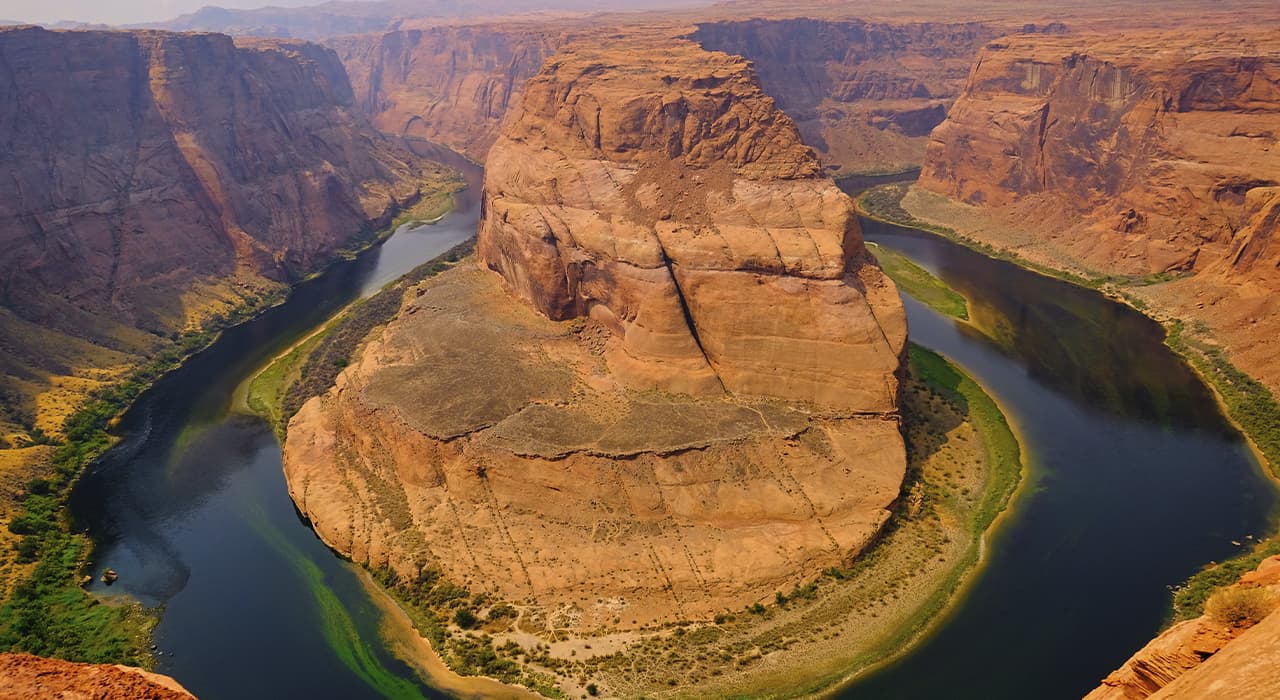Grand Canyon
A deep crevasse winds through the state of Arizona for more than four hundred kilometers. The Canyon owes its appearance to two rivers, the Colorado and the Walpai, which over millions of years have been grinding through the sandy and rocky soil of the plateau. The architecture of the ornate walls was also aided by the wind that polished their surfaces. The many stony rocks that open up in layers as the Canyon is formed fill it with all sorts of shimmering hues.
You can enjoy fantastic scenery if you visit one of the greatest U.S. wildlife refuges, Grand Canyon National Park. The park covers almost five thousand square kilometers. The most visited area is the south end of the Canyon, where the most popular vantage points are located.
Antelope Canyon
Antelope Canyon gets its name from the red-red walls, resembling the skin of an animal. The canyon’s bizarre topography is filled during the day with light pouring in from numerous crevices. For centuries, water and wind have carved indentations in the red sandstone. Rare torrential rains flood the canyon, washing away the top layer of sand – so the water forms the interior amazing topography of the rocks.
Sonora Desert
The Sonora Desert is one of the most extensive and arid deserts in North America. It covers the state of Arizona, California, and northwestern Mexico, totaling more than 320,000 kilometers. It is home to Saguaro National Park, which includes the Colorado, Yuma, and Lechuguilla deserts.
Despite the arid climate Sonora is not completely covered by sand. There are more than sixty species of animals and more than a hundred species of birds. Only this region of North America is home to Jaguars and the huge Saguaro cacti, more typical of Mexico. Seventeen Indian tribes live on desert reservations, preserving their ancient ways and customs.
Colored Desert
The Colored Desert, in northern Arizona, in the United States, is one of the most amazing places on our planet. It is a large part of the North American Colorado Plateau. Beautiful colored hills stretch along the Little Colorado River and form an absolutely incredible scenic landscape. This desert is part of the famous Grand Canyon and is part of Petrified Trees National Park.
Havasu Falls
The Grand Canyon is one of the most amazing places on our planet. At first, it may seem like a monotonous place with only reddish cliffs and bizarrely shaped rock formations. But that’s not the case at all. The Grand Canyon holds many amazing landscapes, among which the gem is the emerald Havasu Falls.
Many have seen it on postcards or calendars, but not many get to see it in person. Havasu is located one kilometer from the Indian village of Supai, so it is often called “Havasupai” as well.
